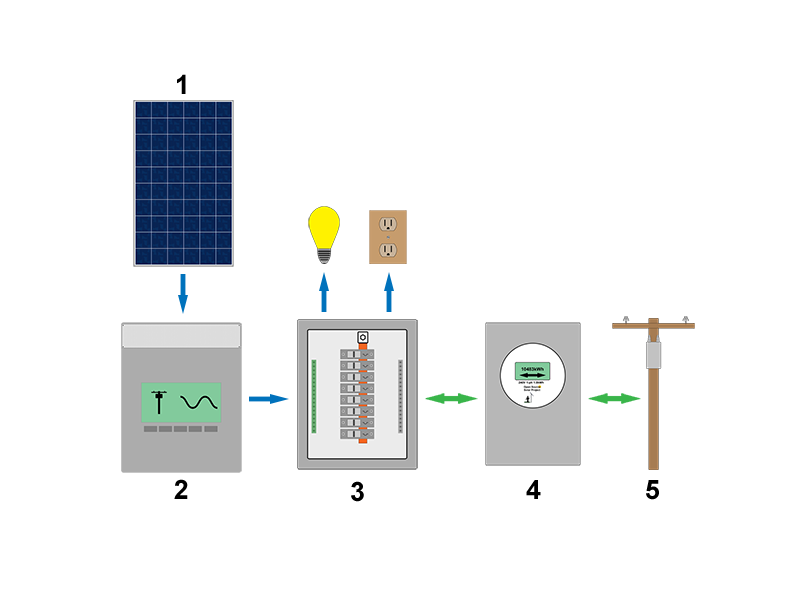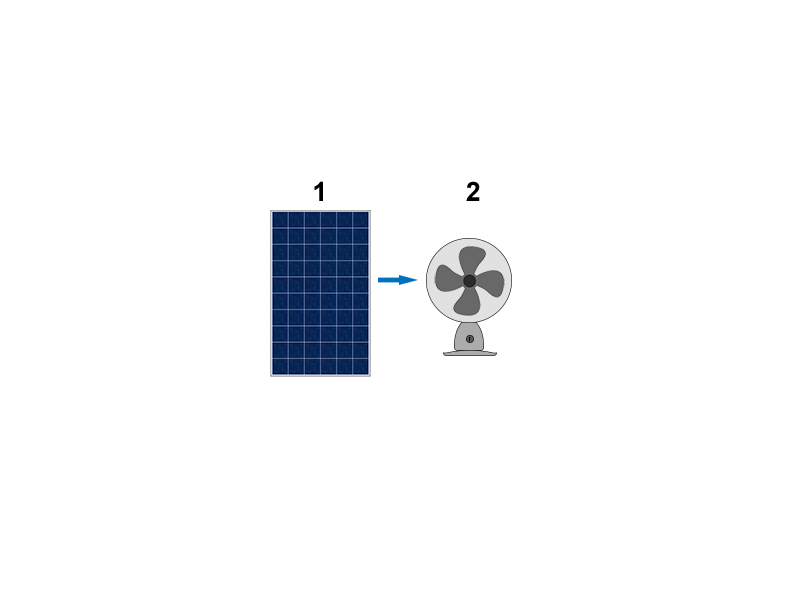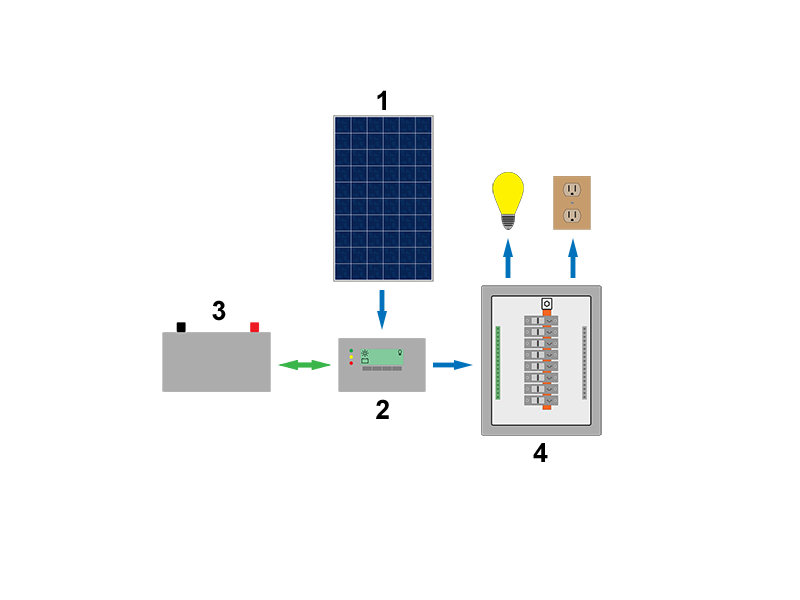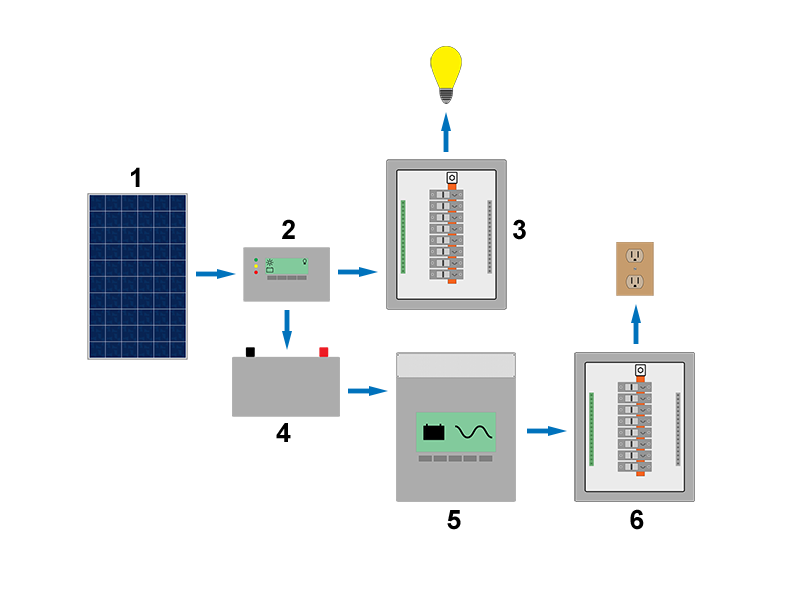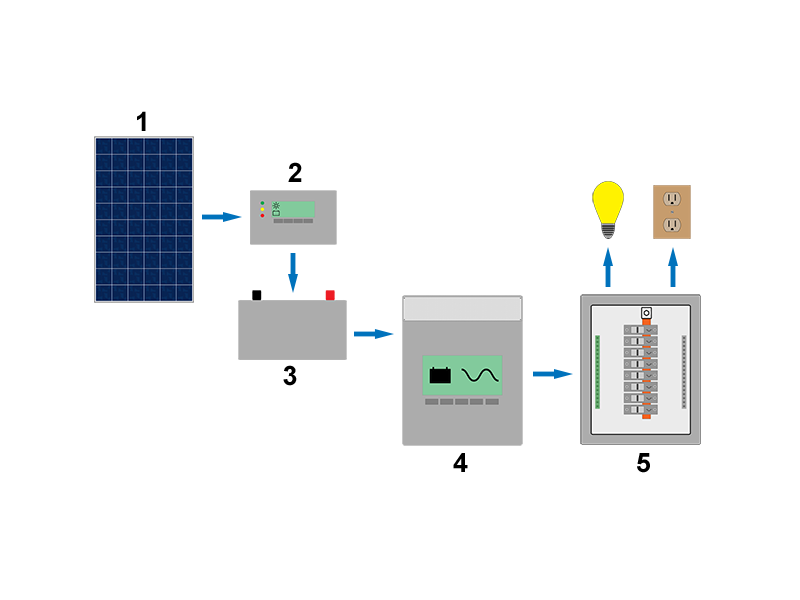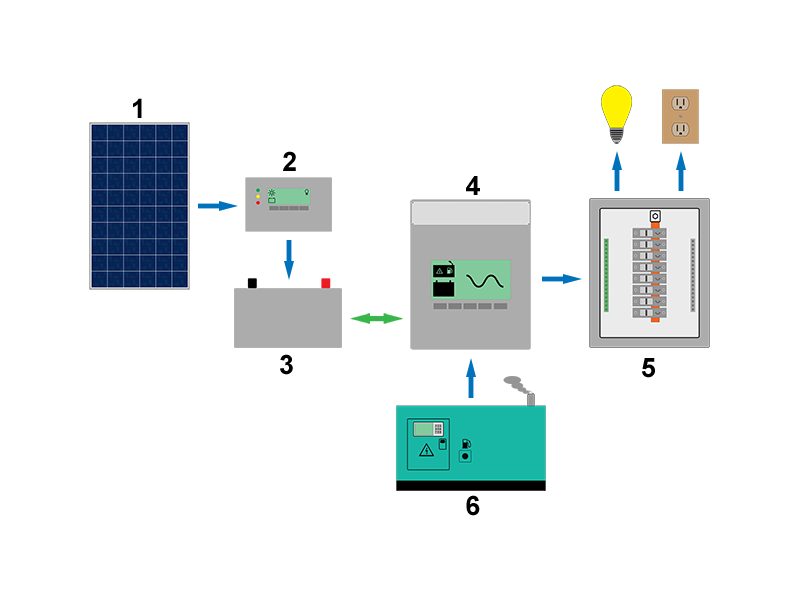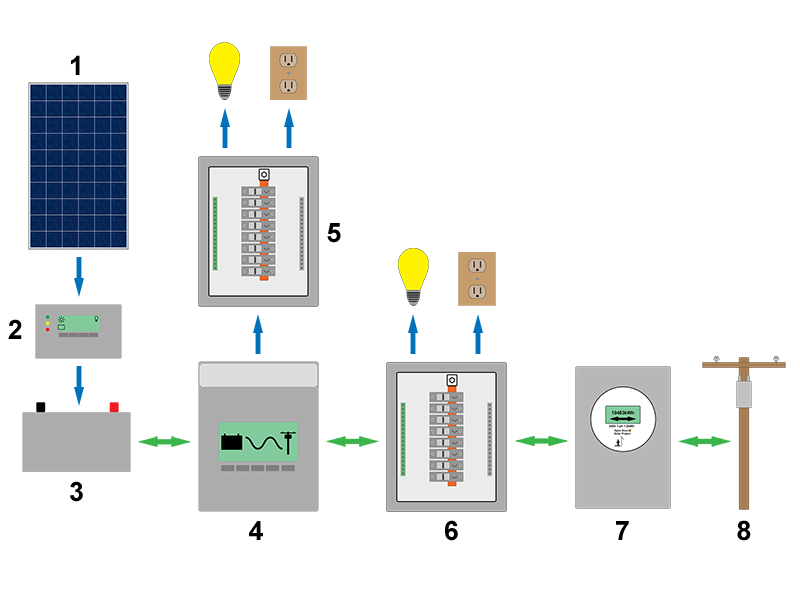PV system types
Open Source Solar Project is focused on stand-alone PV systems, nonetheless it is important to distinguish the different system types and associated terminology as it will help when designing a system and selecting equipment.
Contents
Grid-direct PV system
PV systems installed that have a grid connection are called grid-tied systems. The inverters that come with these types of systems are called interactive as they are capable of interacting with the grid by matching its voltage and frequency. They automatically shut down if they lose their connection to the grid in order to ensure the safety of any electrical workers that might be working to correct the issue. These systems therefore do not provide backup power in the case of a power outage. These systems cannot store energy, thus as the system produces energy, it must either be consumed on the premises or it will be fed back into the grid - through a meter - to be used by other customers. The majority of PV systems installed globally are of this type.
Stand-alone system
PV systems installed in areas that lack a grid connection are called stand-alone systems but are also commonly referred to as battery-based or off-grid systems. These systems take many different forms, but they almost always incorporate some type of storage, typically a battery bank, and one or more charging sources. In addition to solar PV, these systems may also incorporate a generator, wind, or hydro. Stand-alone systems can use alternating current and direct current as charging sources and can supply alternating and direct current for loads. The various different stand-alone system types used for small-scale projects are depicted below. More complex designs used for microgrids or very large systems, like those that incorporate alternating current (AC) coupled charging, are excluded. To understand how power flows between key components, see Special:MyLanguage/Power flow between components.
Any connections to an energy storage system should run through a low voltage disconnect which will disconnect loads if the voltage of the energy storage system drops too low in order to protect the batteries. Often times the low voltage disconnect is integrated into the charge controller or inverter.
PV direct system
The simplest of all PV systems. A PV source that functions at a nominal voltage - typically a 12V nominal module - can be directly connected to a simple DC load like a fan that is capable of functioning throughout a wide range of voltages. If the PV source is not producing sufficient power or it is simply nighttime, the load will not function as there is no form of energy storage.
Direct current (DC) only system
A common system in less developed off-grid areas, most systems below 100W of PV are of this type. An economical option to provide lighting and energy for small appliances. Using only direct current has the advantage avoiding energy losses due inefficiencies created by an inverter (inverters are typically only around 80%-90% efficient in practice) and the energy that is required to power an inverter when it is standing by. The disadvantage of not having an inverter is that most appliances are designed for use with alternating current, therefore the available DC appliance market is often much smaller.
With an inverter and direct current (DC) lighting
An inverter becomes an essential part of any PV system that is intended to power anything beyond small lighting and appliance loads. A standard inverter enables the use of alternating current appliances. An inverter does have efficiency losses and stand-by consumption losses, but it makes a PV system far more versatile. It may still be desirable to incorporate DC lighting and appliances as they are more efficient and do not require the inverter to operate to function. The inverter may be operated only intermittently in a system of with this design. DC has disadvantages for lighting and loads when it has to run longer distances due to voltage drop.
With an inverter
With larger systems - especially systems with longer wire runs (due to voltage drop - the best design typically relies primarily upon an inverter that is continuously operational to supply AC to lighting and loads. DC refrigerators are often an exception as the most efficient refrigerators on the market are designed to run on DC and if the inverter has an issue there is no risk of spoiled food.
With an inverter/charger
A system with larger energy needs or a system that supplies critical loads, like at a medical clinic, will often incorporate a generator to ensure that energy needs are met at all times. An inverter/charger is capable of rectifying (the opposite process of inverting) alternating current into direct current in order to charge the battery bank. The inverter/charger can be programmed to automatically start a generator if the voltage drops below a certain value or if the loads increase to a certain value.
Grid-tied multi-mode systems
An multi-mode system includes an inverter/charger that is capable of interacting with the grid can integrate many different energy sources for energy storage charging, backup power, and energy management schemes. They can charge the energy storage system off of the grid, but can also be programmed to feed energy back into the grid if the energy storage system is full and there is excess energy that is not being consumed by loads. As these systems integrate PV, energy storage storage and the grid, they are rather complex and can require significant programming depending on the application. The two most common applications for a multi-mode system are for back-up power systems and for grid-tied systems in areas that offer very little compensation for excess energy feed back into the grid or prohibit the exportation of excess production. If very little compensation is offered to the user, then the inverter is typically set in an auto-consumption configuration, which prioritizes the local consumption of the energy generated by the PV source before any is exported. If exporting to the grid is prohibited, then the inverter can be configured into a zero sell configuration that will ensure that no energy is fed back into the grid.
A key aspect of a grid-tied multi-mode system is that loads must be isolated into separate panels: the critical load panel and the non-critical load panel. During a power outage, the multimode inverter will continue to supply electricity to the critical load panel to ensure the functioning of these loads, while any loads in the normal distribution panel will lose power. The reason for dividing loads into these two categories is that the output of the inverter and the energy stored in the energy storage system is limited, therefore the loads must be limited accordingly.
